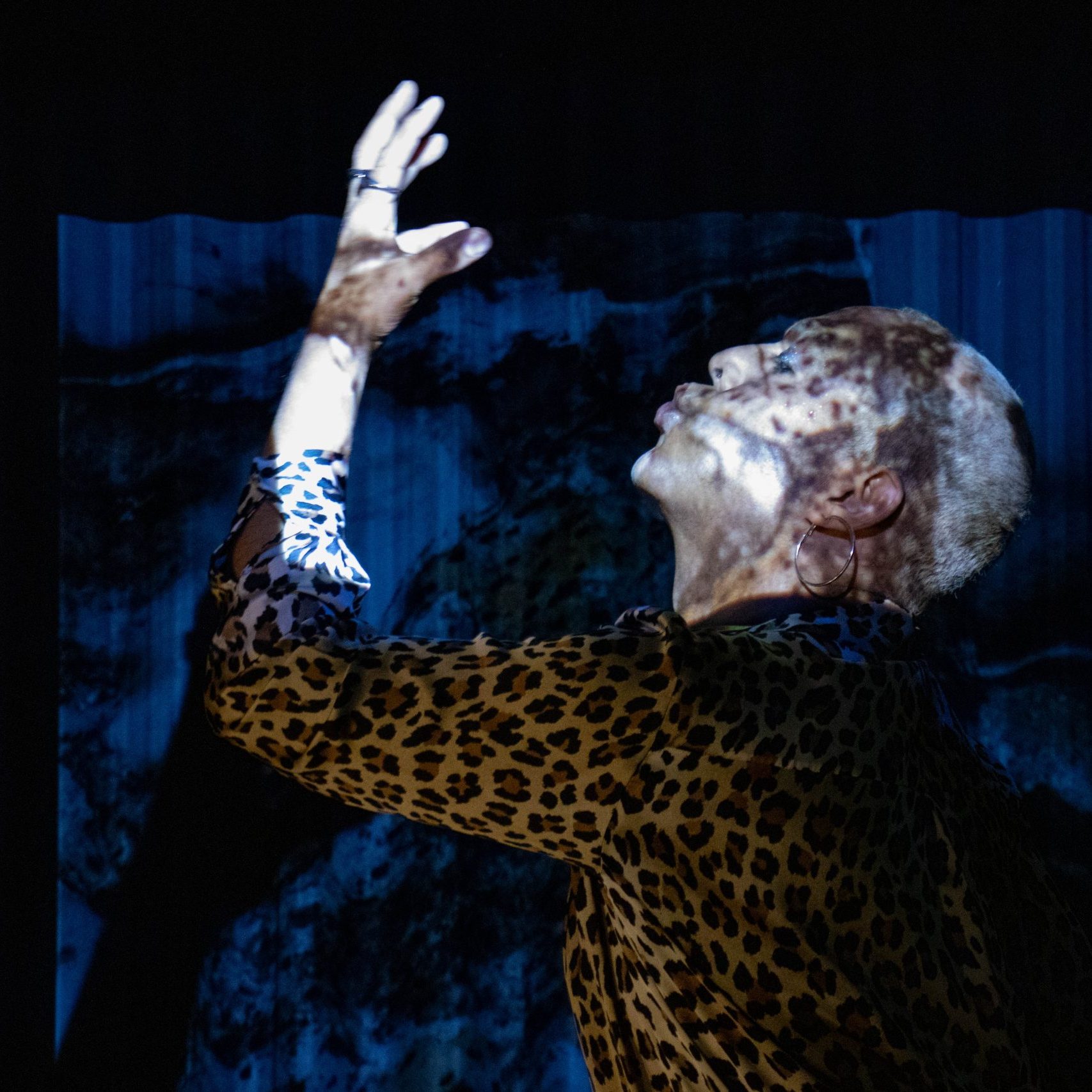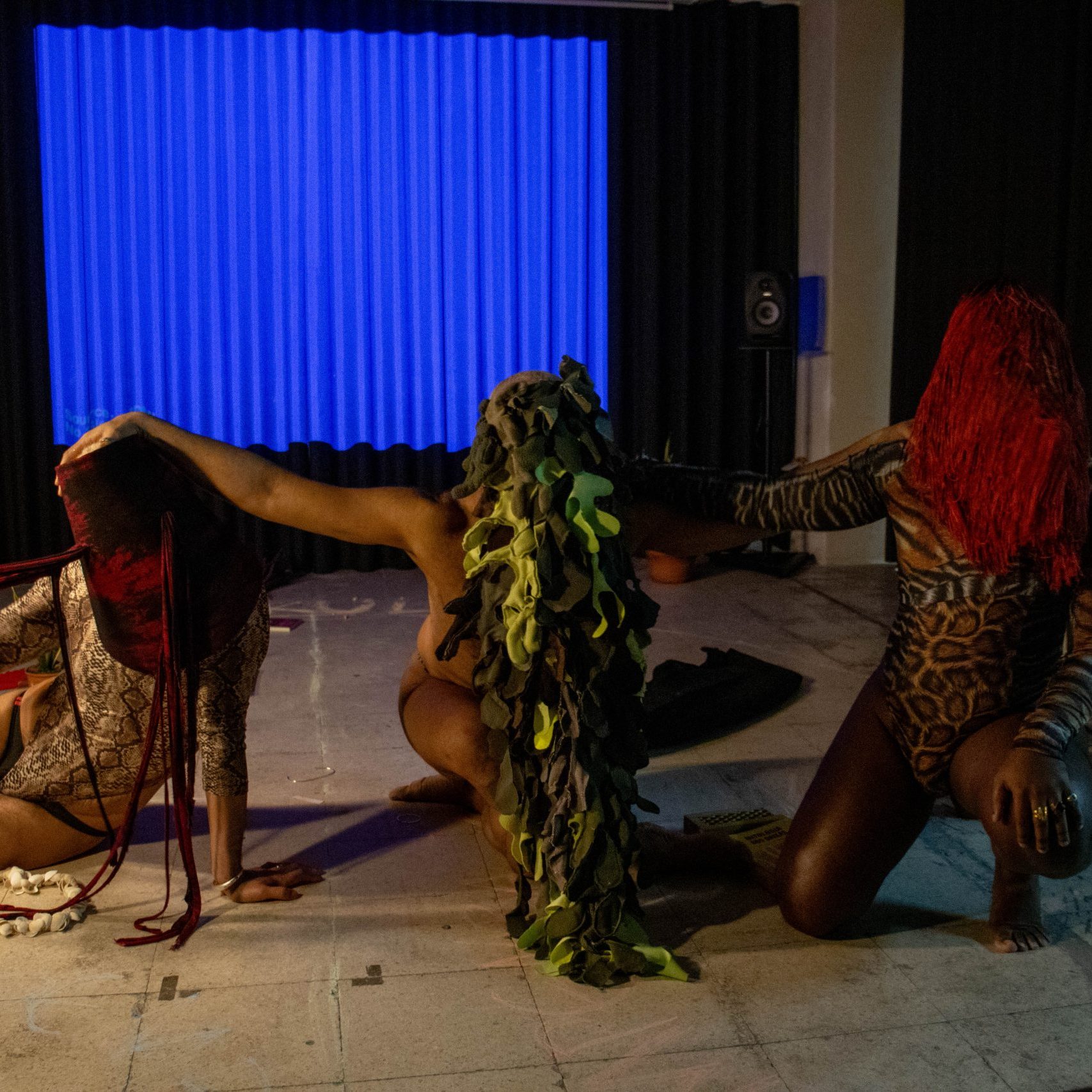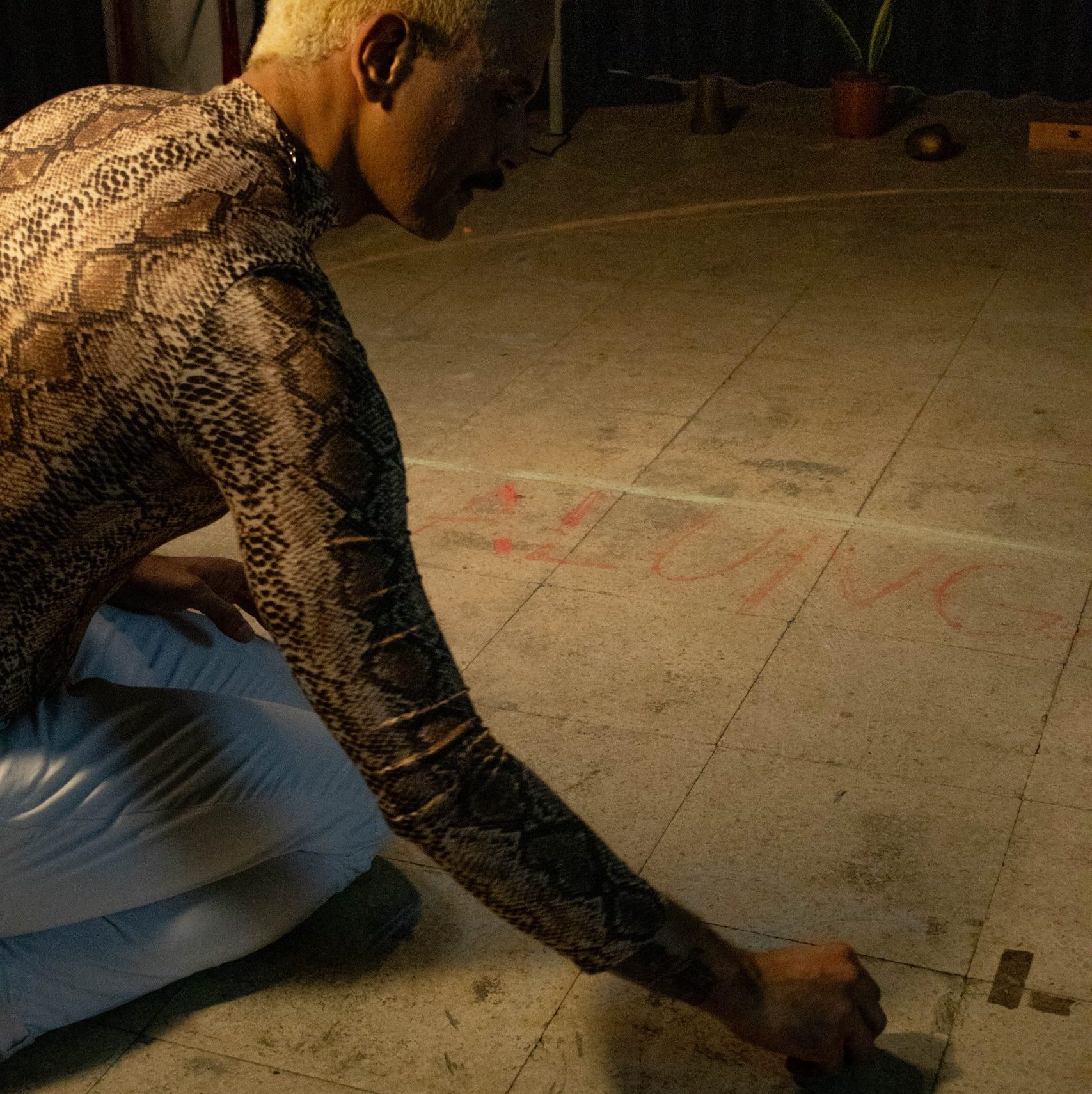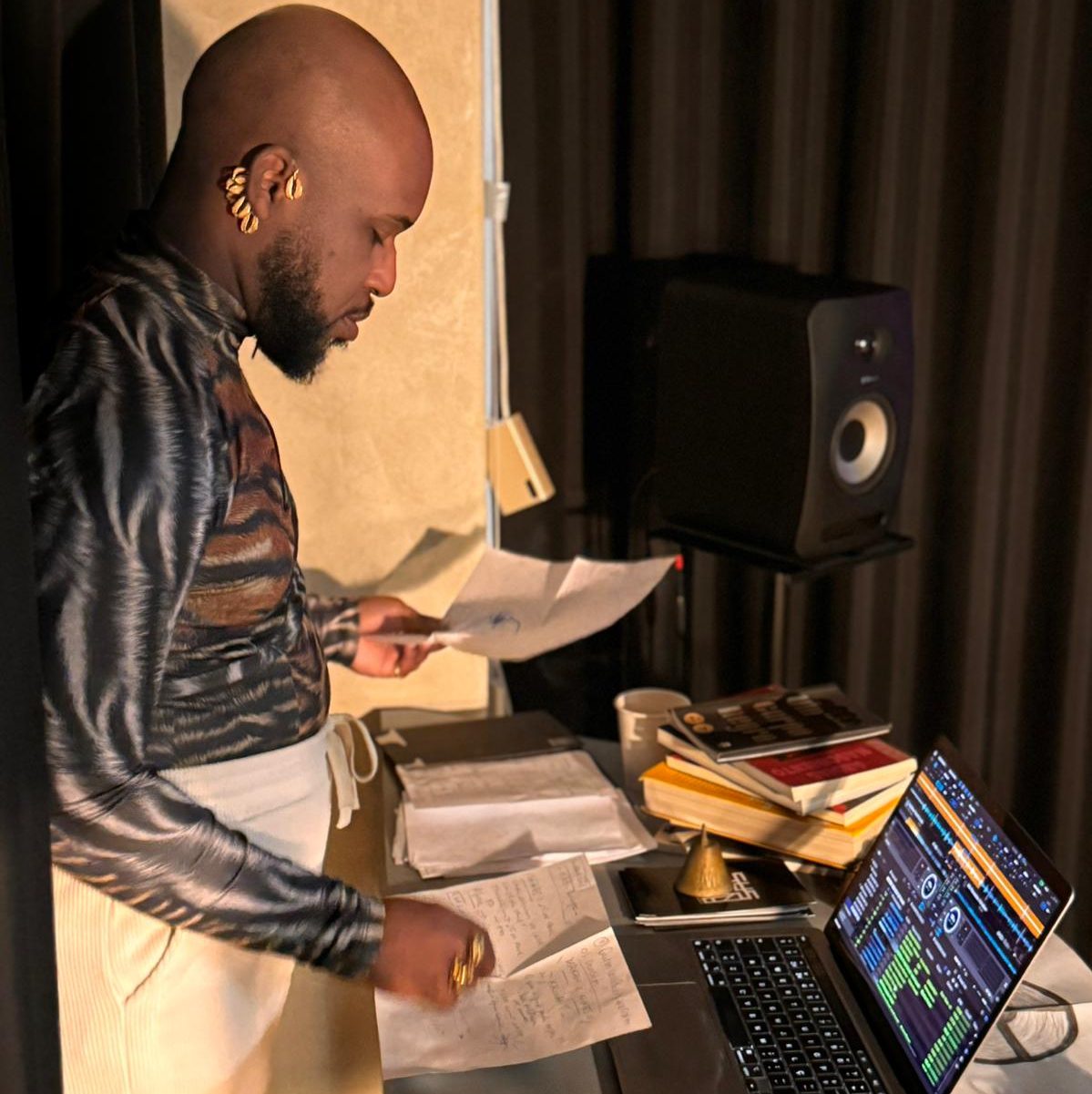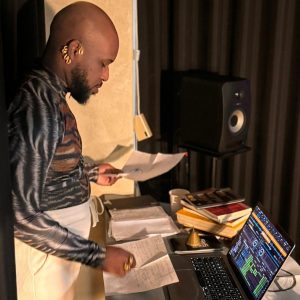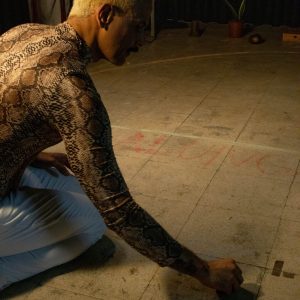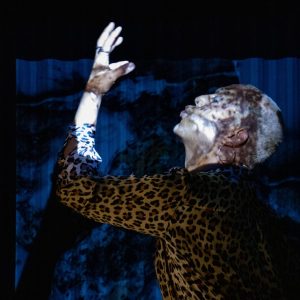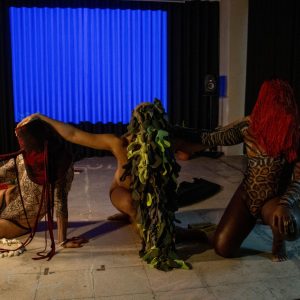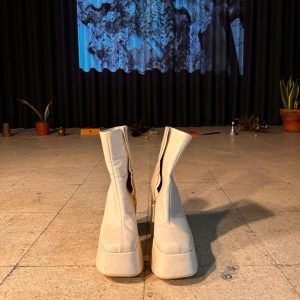Kalunga: Towards for a black cuír ecology
A collaborative artistic research project by the Afrontosas Collective, created by the artists ROD, tony omulu and DIDI, which has been in development since the end of 2023. The project was created from reflections on the neologism ‘cuír’ and the importance of non-European mythological aesthetics in shaping the identities of black artists in a state of migration.
When we look at the Afro-Brazilian myths that were formed from the cultural heritage of Angola, Nigeria and Benin, we see how ‘nature’ is a fundamental element in giving existence to the world.
That's why it's important to research it as an artistic practice aimed at understanding our relationship with ‘nature’, in the sense of caring for it and what it offers us.
We're talking about a perspective that no longer depends, or wants not to depend, on a compulsory heterosexist and cissexist vision and that doesn't want to be subjugated to a Europeanised and whitened vision.
The main aim of the project is to understand how Afro-Brazilian mythologies can influence the production of contemporary art based on the intersection between ecology, race, sexuality and gender. The aim is to reflect on how the concept of queer ecology can help our collective artistic practice through an ecocritical and autonomous movement that rejects the compulsory heterosexualisation of its processes and its binarisms.
The project focuses on four areas: ecology, race, gender and sexuality. It is articulated between disciplines linked to the Social Sciences, Biology, Environmental Justice and Critical Race Theory. The artists ROD, tony omulu and DIDI are black queer people and immigrants who have developed important work in Portugal in the field of artistic production and in the debate about the importance of the presence of black queer people in the Portuguese art scene. The question of gender and the social organisation of sexuality are evident in the aesthetics they have been developing.
The quest to understand the role of a black, queer and immigrant artist making art in Portugal requires not only creativity, but the search for concepts that have contributed to artistic production responding to contemporary needs for its existence. In this sense, they look to the imagery of Kalunga as a starting point that will be combined with practices of resistance in the sense of transgressing heterosexual and cissexist semantics in an attempt to remodelling the normative assumptions of ‘purity’, otherness and performance that are catalogued as ‘dangerous’, in other words, those linked to LGBT and black people.
The project's methodology seeks to introduce into the artists' artistic production the potential for semantic subversion of categories, for example, by invoking a language of their own that is representative of their objectives. The concept of ‘cuír’ is an example of this. It invokes the very quality of artists who come from decolonial geographies in their search for means that have not yet been formulated for harmonious coexistence with the environment.
Considering that the concept of ‘nature’ comes from society's external view of how we categorise it, and considering that it can only be better understood through the idea of queer, that is, through a view that rejects the naturalisation of heterosexuality and its projection onto the way ‘nature’ works (sociobiology), the project looks to the concept of Kalunga as an imaginary thought that tries to cooperate in the reformulation of boundaries and dichotomies that prevent and limit the existence of historically marginalised people.
How can we think of an artistic practice capable of thinking of sexuality as an axis of power that has a direct impact on the condition of queer people? How can we oppose heteronormativity in an artistic exercise that combines the potential of what we call ‘nature’ in the sense of attracting it as an ally in the affirmation of an identity that is not dependent on the colonial effects of the racialisation of these people? How can Kalunga, the place of death and life, contribute to our artistic work in the sense of providing aesthetic elements that produce not only public fruition, but also the production of an ecocriticism committed to the climate issues facing the world today? How can we align art as a partner in decolonial processes?
In the movement that the project has made so far, the artists have looked at fundamental issues for contemporary society. The exploitation of natural resources is combined with the insistent exploitation of black and queer lives, both by industry and by the art system itself. The extractivist model is continuous and reverberates the colonial state of the world in which minorities continue to occupy their usual place. Kalunga and Ecologia Cuír come together in this project as a vanishing point. They appear as an exercise that seeks to interpret ‘nature’ not as a resource to be consumed to the end, but as a companion. We believe that our relationship with other living beings has been established by a heterosexualisation external to their existence. That's why we believe that this condition can be changed, since it is not a biological relationship. How can we talk about queer ecology without emphasising the extreme conditions of consumption to which ‘nature’ has been subjected? How can we leave aside the problems caused by the naturalised and anaesthetic relationship we establish with other living beings as a result of their excessive consumption? Where does the idea that ‘nature’ exists to be consumed like this come from?
The project aims to use the neologism ‘cuír’ as a starting point for contrasting categories within the semantic field of the word ‘queer’. In the same way, we invoke ‘cuir’ as a practical and theoretical exercise in questioning the limitation that the categories of nature, sexuality and gender place on the self-determination of identities that do not conform to these categories.
The word ‘cuír’ is used in the project as a way of establishing another position in the world on the decolonial resistance of black lgbtqia+ people. Cuír is a manifestation of insurrection against attempts to imprison non-hegemonic people within certain categories. Cuír is Brazilian Portuguese. It is Afro-Brazilian mythology. It harbours a position of contrast with the normative. Outside of a Eurocentric (white-binary) context, the cuír translates a black-founded conceptualisation that feeds on a dissident-sexual diaspora.
Likewise, the concept of Kalunga serves as a mediator in this search. An element that has become fundamental in understanding a black and cuír ecology. Kalunga is the place between. It connects worlds, connects boundaries and thus becomes a place that contests European knowledge as the first. Kalunga is the inside and the outside, thus making the totality. And it serves us in this project not as a guiding concept, but as a compass that shows where we can go in terms of changing our conception of our relationship with what we consider to be living, non-living, human and non-human.
More information soon.
